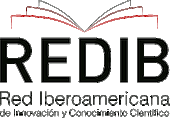Environmental school project (PRAE) for the recovery of soils in the Technical Education Institution of Salamanca at Samacá -Boyacá
DOI:
https://doi.org/10.25044/25392190.480Keywords:
soil, organic wate, garden centre, trees fences, reforestation.Abstract
Samacá is a town that is located in the state of Boyacá Colombia, Samacá has a big heritage of natural resources as moors and water storage. Due to its topographical location it counts on a great offert in forest resources and biodiversity, which are the main basis of sustenance in the development of the region and the variety of uses in the territory. However the coverage has declined because of the antrophic action over the natural resources with several kind of activities such as intensive deforestation, mining, and the extension of the agricultural frontier, pollution of moors and rivers with solid waste, urbanization. Also it could be observed the carelessness of the inhabitants about the importance of the environment. Thus, coal mining is the most important economical activity in the region, most of the coal mining activities are developed in opencast mining which has caused soil damage, and the accelaration of air pollution due to the hazardous material. Salamanca is one of the most affected by this phenomena, in particular the Technical Educational Institution of Salamanca which it is located between two well traveled rural roads in construction. This school shows a serious air pollution issue, what has caused lung diseases to the teachers and students. In that specific context it is proposed a soil reforestation Project, aimed at first to establish a living fence of trees as alive barrier to reduce the hazarduos material from the construction of the roads and the opencast mining. On the other hand it is proposed to plant native plants of the región so, the school will become an epicenter of the recovery and restoration of the damage soil in that place. The technical institute school of Salamanca through school environmental Project, has been trained about the awareness of the environment, the natural resources, earth, fauna and flora, solid waste management and resforestation techniques such as planting trees and the designing of a garden centre. Besides including environmental education as a priority in order to promote the enviromental awareness to the inhabitants.Downloads
References
Allen, C. T., Haupt, S. E. & Young, G. S. (2007). Source characterization with a genetic algorithm–coupled dispersion–backward model incorporating scipuff. Journal of applications in meteorclimatology, 4(6), 273–287.
Corpoica-Cortolima-Universidad del Tolima, (2000). Plan de agroforestería para el Tolima. (documento en preparación por: carrero g., leal c., Díaz e., Vargas r.,) Ibagué. 3. Gobernación del Tolima. Plan de desarrollo “Tolima posible”.
Corporación Nacional de Investigación y Fomento Forestal. CONIF, (1998). Guía para plantaciones forestales comerciales. Tolima. Santa Fe de Bogotá, 37 p.
Decreto 1075 de 26 de mayo de 2015. Ministerio de educación nacional. Colombia. 2015. 394p.
Departamento Nacional de planeación DNP, (1996). Política de bosques, Santa Fe de Bogotá, 35 p.
Geilfus Frans, (2002).80 herramientas para el desarrollo participativo: diagnóstico, planificación, monitoreo, evaluación .San José, IICA, 217p.
Mesa Participativa Sector Salud Municipio de Samacá, 2013. 74 p. En http://www.samaca-boyaca.gov.co.
Ministerio de educación nacional. Educar para el desarrollo sostenible. Altablero no. 36, agosto - septiembre 2005. En http://goo. gl/UYg4oq Minagricultura, Minambiente, Mincomercio, Mindesarrollo, Departamento Nacional de Planeación. (2000), plan nacional de desarrollo forestal. Santa Fe de Bogotá. 74 p.
Orozco José Miguel, (1999). Políticas forestales en Colombia, Universidad Distrital Francisco José de Caldas, Santa Fe de Bogotá, 375 p.
Vargas Ríos Rafael, (1999) la reforestación: una estrategia prospectiva fundamental para el desarrollo del departamento del Tolima. Ibague.
Downloads
Published
How to Cite
Issue
Section








